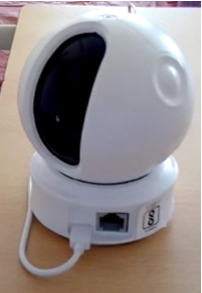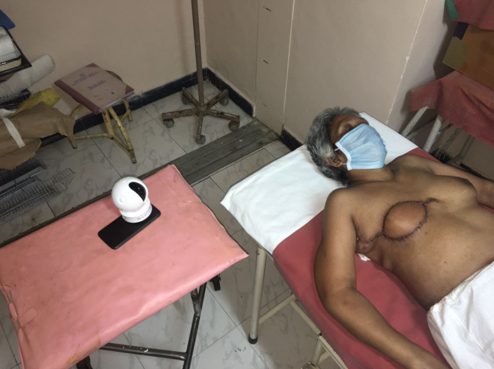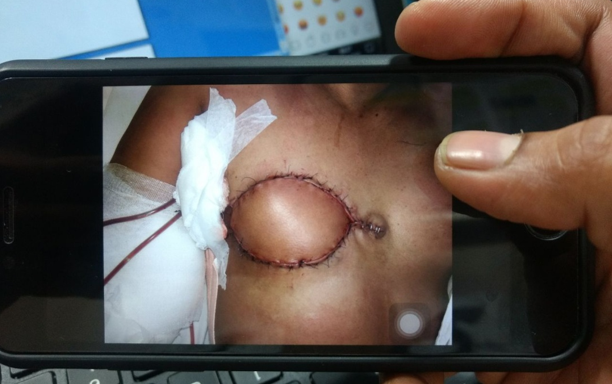Introduction
Flap cover for wound is a common procedure in plastic surgery. It is time consuming as well, as it requires meticulous dissection, pedicle identification and inset. Hence post procedure, monitoring also plays an important role in improving the survival of a flap. Clinical monitoring is the gold standard in flap monitoring.1 Various other methods have also been described in flap monitoring, but all of them involve the doctor personally attending to the doctor. COVID-19 pandemic has been ravaging its influence and spreading all over the world in a rapid pace since its advent in December 2019 in Wuhan in China.2 Disease being spread by droplet infection, social distancing is an important measure in preventing the spread of virus. In this article we would like to describe our experience in using a Pan tilt Zoom camera, which aided us in telemonitoring a lattismus dorsi flap done for breast reconstruction.
Materials and Methods
The study was conducted in the department of plastic surgery of a tertiary care centre, during the month of August 2020. The patient was a 45 year old lady with complaints of Lump in the right breast, which was diagnosed as a malignant lesion of stage T3aN2bMo. The patient was managed with Preoperative chemotherapy and radiotherapy, following which the patient completely responded and the tumour downgraded to T0N0M0. But as the surrounding areas were fibrosed, plan was made to excise the fibrous tissue and cover with a regional lattismus dorsi myocutaneous pedicled flap. Post operatively, the patient was kept in the recovery ward in a different block. In an attempt to avoid physical contact and also to ensue continuous monitoring, a Pan tilt Zoom camera was used for monitoring the flap remotely.
The PT camera used was model CS-CV246-A-1C2WFR with PT angle of Pan: 340 degree and Tilt of 120 degree. The camera was able to record HD and Ultra HD videos with a maximum resolution of 1920×1080. The cost of the camera is about 13000 INR.
Pan-Tilt camera was installed in intensive care units and smart phone devices were configured and application was downloaded. Once the device is set and camera installed, the PT camera aided in zooming in on the flap site and remotely monitoring the colour, turgor and any discolorations, if any in the flap.
A feedback form was taken from the residents and consultants, who used the camera for monitoring the flap, and the response was found to be satisfactory.
Discussion
Since its initial reporting, COVID-19 (or) SARS-COV2 has rampantly been spreading and has become a pandemic. The main mode of spread is droplet infection. Measures like maintaining social distancing, wearing masks, staying at home, avoiding social gatherings etc. have been implemented worldwide, many countries have declared lock-down for days allowing only emergency medical services and other essential services to function. In this pandemic, patient care and services has taken a new shape, thanks to telemedicine.
WHO defines telemedicine as “The delivery of health care services, where distance is a critical factor, by all health care professionals using information and communication technologies for the exchange of valid information for diagnosis, treatment and prevention of disease and injuries, research and evaluation, and for the continuing education of health care providers, all in the interests of advancing the health of individuals and their communities”. 3 Telemedicine can be classified into 4 types based on mode of communication (video, audio, text based, according to timing of information transmitted (Real time video/audio/text interaction), according to purpose of consultation (diagnosis, treatment, health education, counselling for non-emergency consultation and immediate assistance or first aid for emergency consultation)and according to individuals involved(doctor to patient, doctor to care giver, doctor to doctor, healthcare worker to doctor).4
Pan tilt zoom camera is easy to set-up, user friendly, can be accessed from anywhere and of utmost importance at time of pandemics such as corona for maintaining practices of social distancing. 5
By using telemedicine in flap monitoring we break the chain of spread of the virus through its primary mode – interpersonal contact.
The disadvantage of this technique is that, the cost of the equipment, colour clarity, inability to monitor other important parameters like blood glucose, temperature assessment. It is also a single case single centre study, and it requires a multicenter randomized controlled study to validate the data.
Conclusion
Telemedicine via telemonitoring bridges the gap between the patient and doctor and thereby providing uninterrupted patient care even in challenging times like a pandemic. However it has its limitations. The entirety of its advantages and disadvantages can only be validated in a multicenter randomized controlled study.




